In October 2025 the Davis Community Church (DCC) sent 8 members to Frontera de Cristo (FDC), a Presbyterian border ministry in sister cities Douglas, AZ and Agua Prieta, Sonora, Mexico which was started in 1984.
In addition to supporting immigrants they support a variety of ministries in Agua Prieta and Douglas.
Members from DCC included Deborah Jory, Don McBride, Shelley Newman, David Nystrom Marilyn Perry, Zoe Tilton, Jerry Wang, and Donna Waterman.
Other groups from DCC, churches and secular organizations across the country, have done the trip over the years years.
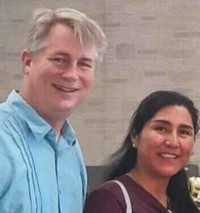 Our hosts, Mark, Miriam, and their teams put together a great program for us, which opened insights into their mission, people, places and more at the border.
Our hosts, Mark, Miriam, and their teams put together a great program for us, which opened insights into their mission, people, places and more at the border.
They thanked us at the end for showing interest with all our questions.
We stayed in Agua Prieta on the Mexico side of the border.
Frontera de Cristo, works with and supports churches and secular organizations on both sides of the border to do Justice, love mercy and walk humbly with God.
The experience is highly recommended by all of us. You can not only say "I was there" when the news talks about immigrants camped near the border, but you meet a lot of passionate, faithful people doing great things.
Some of the activities and groups we visited:
We were impressed by the faith, hope and love of the people in all of these groups.
The area we visited in the South East of Arizona, between Nogales and New Mexico and was a popular crossing area for immigranats.
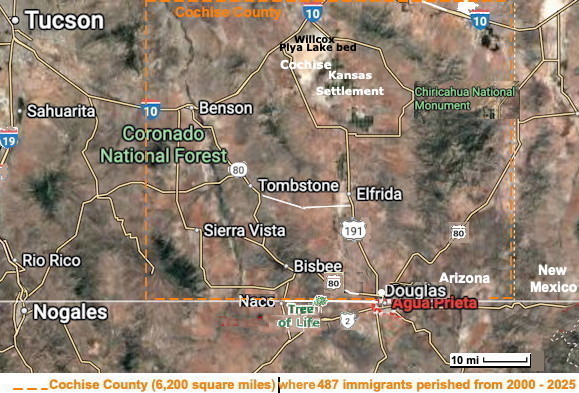 Note: Agua Prieta literally translates from Spanish to "dark water." It refers to a local body of water that has a dark appearance,
Note: Agua Prieta literally translates from Spanish to "dark water." It refers to a local body of water that has a dark appearance,
Old U.S. Highway 80 in Arizona was a major transcontinental highway in the 1920s, known as the "Dixie Overland Highway" that ran from Savannah GA to San Diego. It has been replaced by I-10 connecting to I-8.
Mark Adams, Frontera de Cristo Coordinator, opened with "Reflections at the Border" "What do Borders mean to You?" and an informative overview. He closed with Ephesians 2:11-22 to set the tone for the visit. This passage is used by all the border ministries.
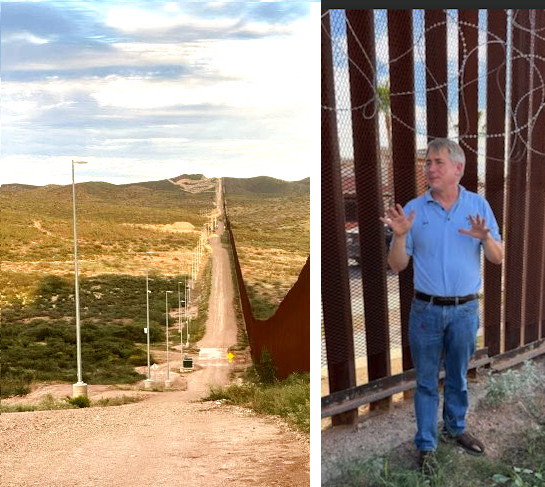
Tree of Life
We rode to a walnut tree in the middle of the desert 13 miles West of Agua Prieta, 3 miles north of highway 2 thru a cattle farm and about a mile south of the border where a Presbyterian church group set up a water drum and brought food to camped immigrants. There were no immigrants there during our visit.
Immigration has s dropped off in 2025.
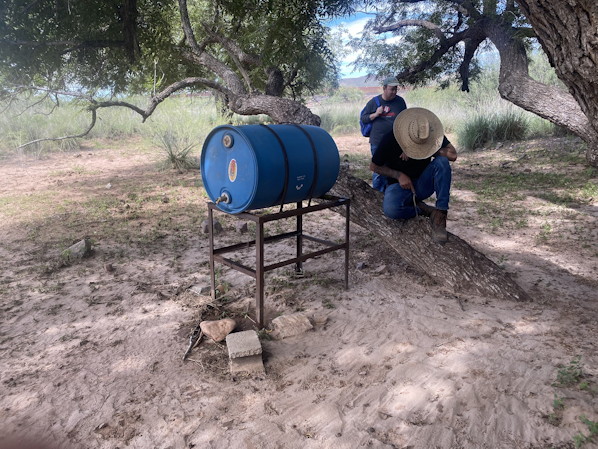
We walked a mile across the dessert to the wall.
Wall view from the Tree of Life
The mile to the the border was covered with by creosotebush (Larrrea divaricata), Chihuahuan whitethorn (Acacia neovernicosa), desert hackberry (C. pallida), woolly buckthorn (Sideroxylon lanuginosum), soaptree yucca (Yucca elata), Arizona walnut (Juglans major), and home to coyotes, mountain lions, bobcats and rattlesnakes.
However it is nothing compared to the Darién Gap, a remote, roadless, and dangerous region of tropical rainforest along the border of Panama and Colombia, which South American immigrants must cross.

Wall 13 Miles west of Agua Prieta
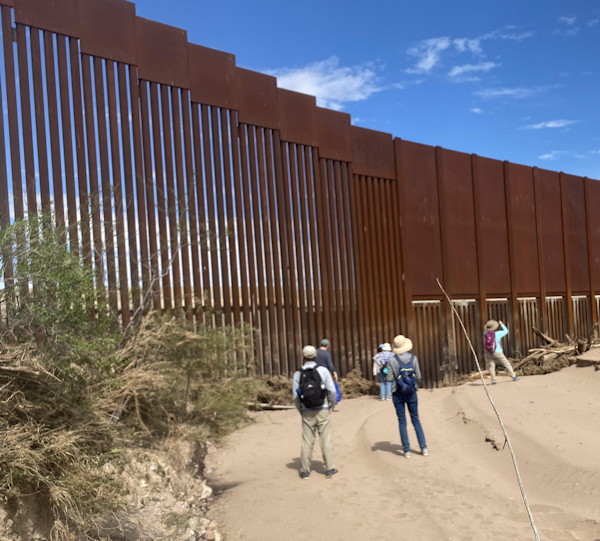
A picture from the web of scaling the wall.
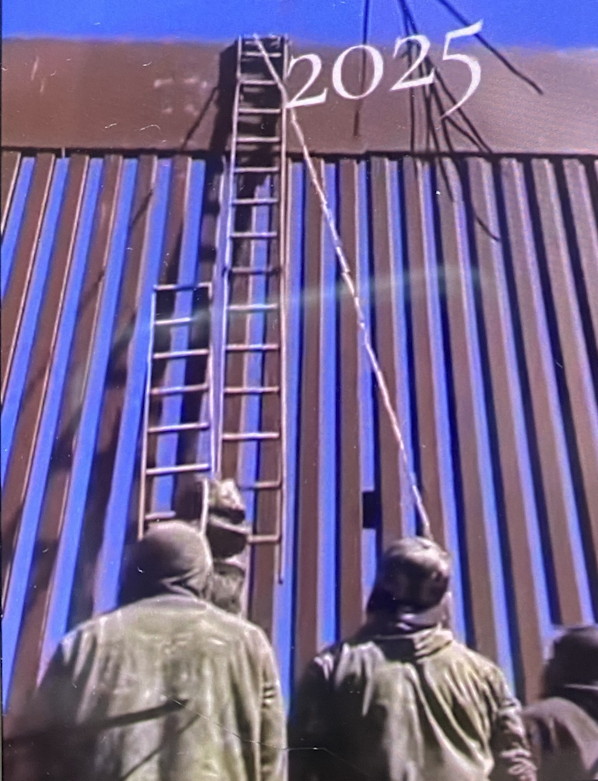
We participated in the weekly "Healing Our Borders Prayer Vigil" on Pan-American Ave., the road to the port of entry in Douglas, AZ and held up crosses with the names (Many crosses listed name unknown) of many of the 486 immigrants who perished from 2000 - 2025 in Cochise County in the SouthEast corner of Arizona.
About 1/3 of crosses are held up each week reading the name and chanting "Presente!"(meaning "present" or "here").
This picture is another group.
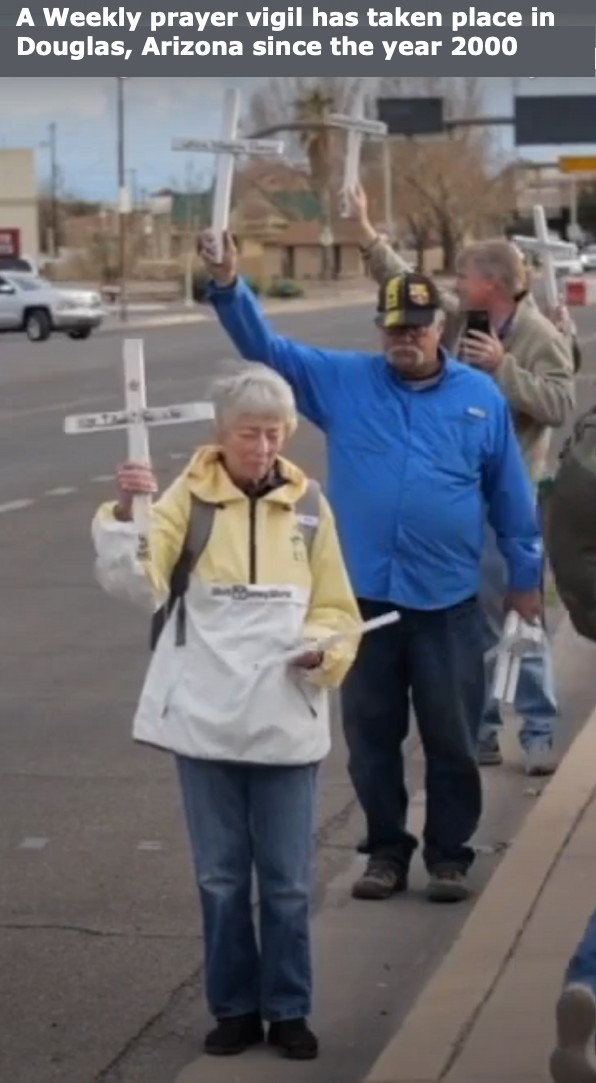
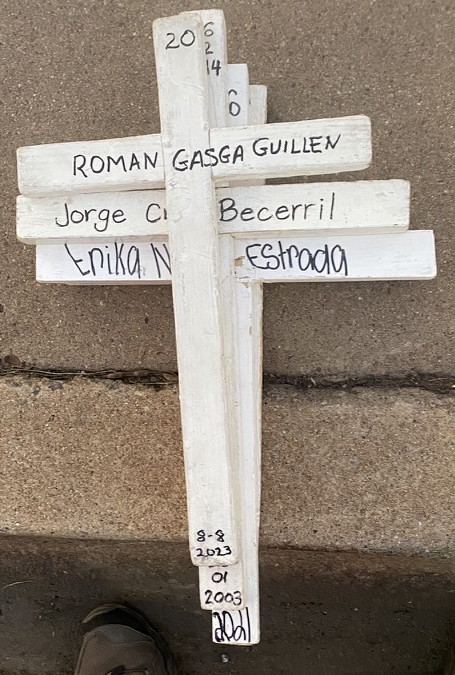
See a Video of a previous vigil.
Note: Pan-American Ave is not part of the Pan American Highway which goes thru Texas.
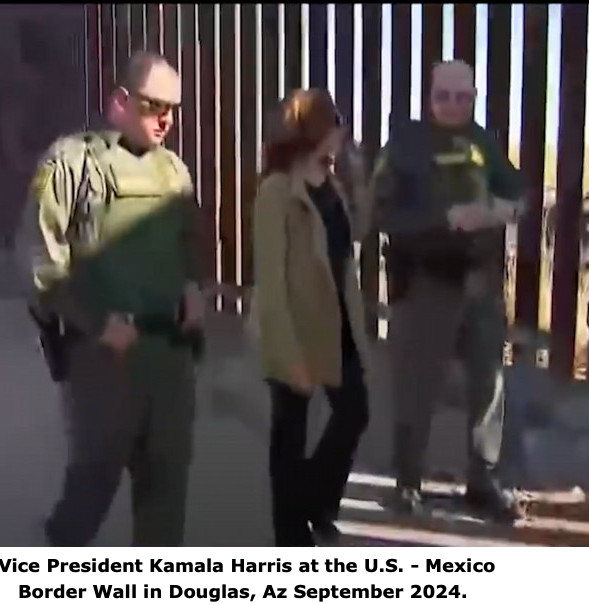
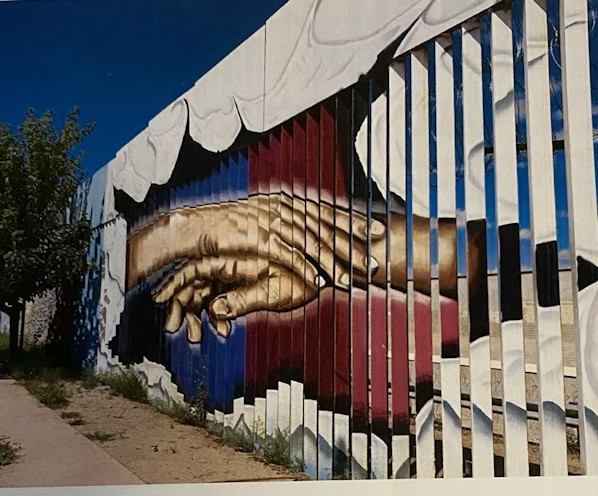

Vivamos Siempre Como Hermanos - Let us always live as brothers.
Todos Somos Inmigrantes - We are all immigrants.
Sister Cities:
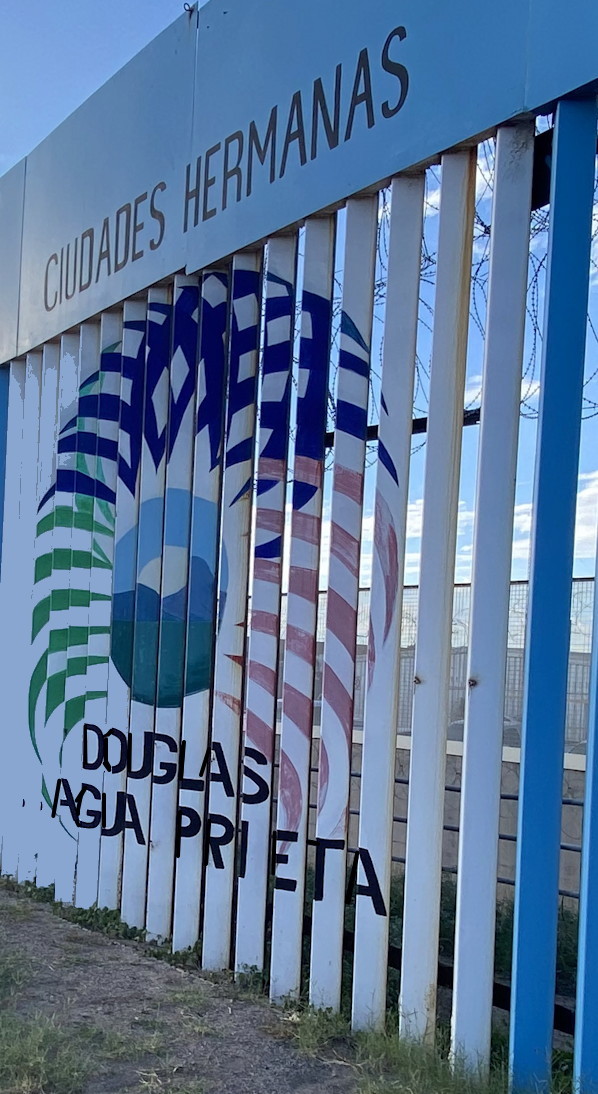
Roasting room.

Links:
Douglas-Agua Prieta Story | click it to start the video
Frontera de Cristo - Building Relationships and Understanding ...
Agua Prieta | Wikipedia
Agua Prieta literally translates from Spanish to "dark water." It refers to a local body of water that has a dark appearance due to the nature of the terrain.
The first settlers in 1898 were people who were employed to work in the mining company Phelps and Dodge Copper Co that its foundry in Douglas, Arizona.
Agua Prieta's participation in the Mexican Revolution, 1910-1917, was extremely important and significant since this place became, for many reasons, an important point for the most prominent men of the Revolution.
Douglas, Arizona | wikipedia
Douglas was founded as an American smelter town, to treat the copper ores of nearby Bisbee, Arizona. The town is named after mining pioneer Dr. James Douglas and was incorporated in 1905. Two copper smelters operated at the site.
In 1931 the Phelps Dodge Corporation purchased 2 smaller smelters then became the Douglas Reduction Works until its closure in 1987